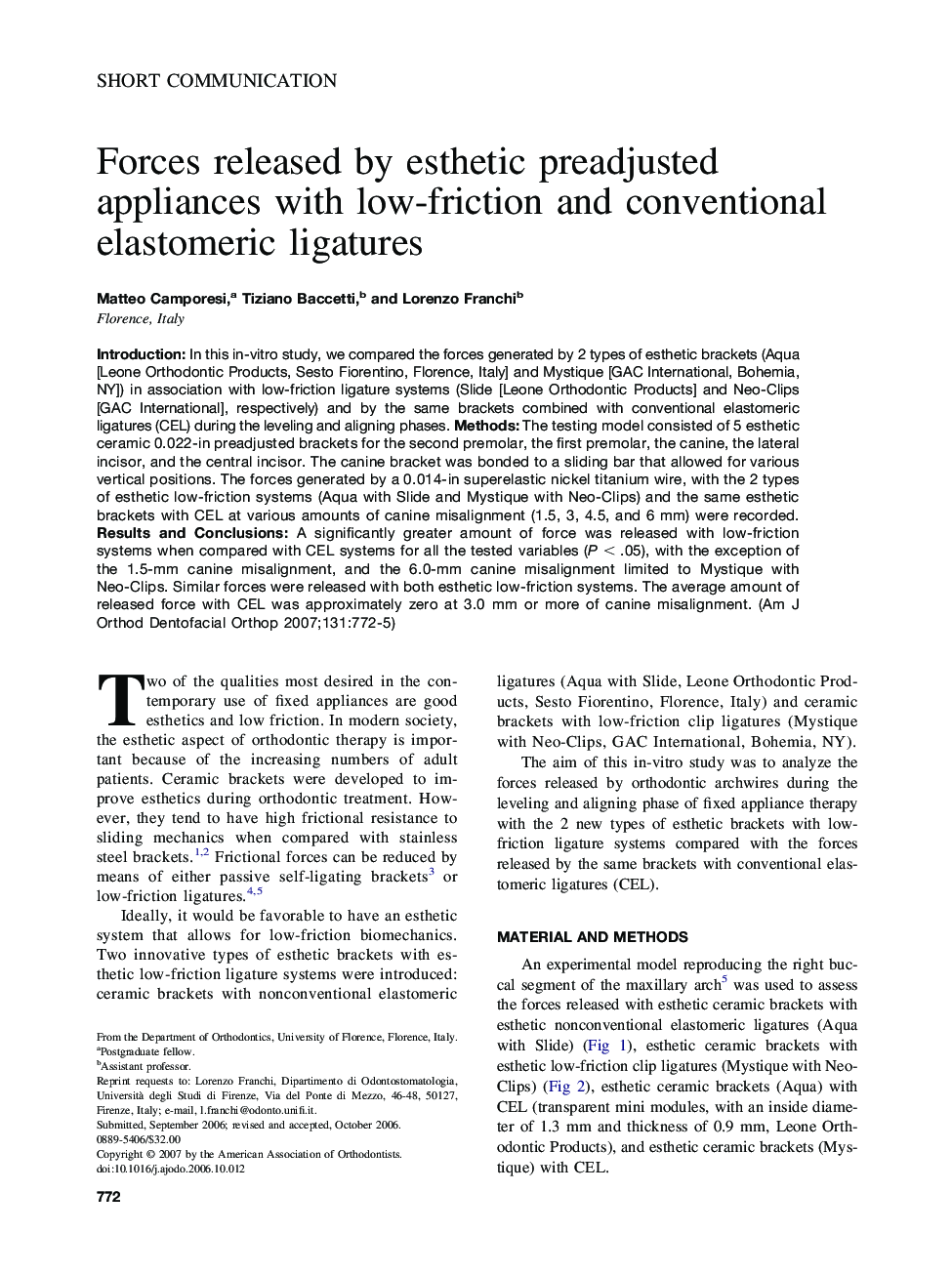| Article ID | Journal | Published Year | Pages | File Type |
|---|---|---|---|---|
| 3120416 | American Journal of Orthodontics and Dentofacial Orthopedics | 2007 | 4 Pages |
Introduction: In this in-vitro study, we compared the forces generated by 2 types of esthetic brackets (Aqua [Leone Orthodontic Products, Sesto Fiorentino, Florence, Italy] and Mystique [GAC International, Bohemia, NY]) in association with low-friction ligature systems (Slide [Leone Orthodontic Products] and Neo-Clips [GAC International], respectively) and by the same brackets combined with conventional elastomeric ligatures (CEL) during the leveling and aligning phases. Methods: The testing model consisted of 5 esthetic ceramic 0.022-in preadjusted brackets for the second premolar, the first premolar, the canine, the lateral incisor, and the central incisor. The canine bracket was bonded to a sliding bar that allowed for various vertical positions. The forces generated by a 0.014-in superelastic nickel titanium wire, with the 2 types of esthetic low-friction systems (Aqua with Slide and Mystique with Neo-Clips) and the same esthetic brackets with CEL at various amounts of canine misalignment (1.5, 3, 4.5, and 6 mm) were recorded. Results and Conclusions: A significantly greater amount of force was released with low-friction systems when compared with CEL systems for all the tested variables (P < .05), with the exception of the 1.5-mm canine misalignment, and the 6.0-mm canine misalignment limited to Mystique with Neo-Clips. Similar forces were released with both esthetic low-friction systems. The average amount of released force with CEL was approximately zero at 3.0 mm or more of canine misalignment.
